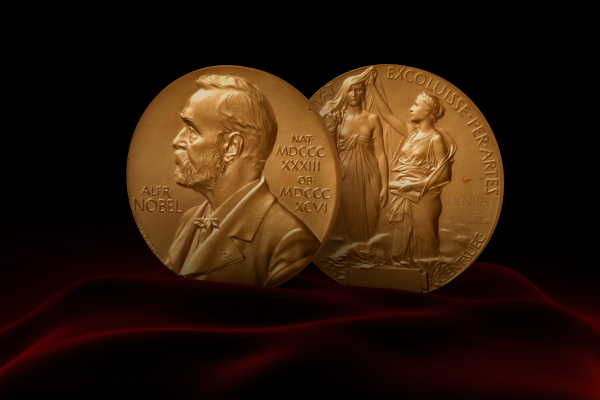
Keeping company with a Nobel Prize winner
UBC Computer Science Professor Dr. Kevin Leyton Brown won’t be winning a Nobel Prize anytime soon. For one thing, the Nobel Prize does not have a category in computer science (yet…).
But he’s had a chance to experience the next best thing — performing years of work in close collaboration with someone who just won the Nobel Prize.
Dr. Leyton-Brown was delighted when the Sveriges Riksbank Prize in Economic Sciences in Memory of Alfred Nobel was awarded jointly to Dr. Paul R. Milgrom and Dr. Robert B. Wilson in October for “improvements to auction theory and inventions of new auction formats.”
Dr. Leyton-Brown has worked closely with Dr. Milgrom on this topic for years. Not only did Leyton-Brown do his PhD on auction theory, but he, Dr. Milgrom, UBC PhD student Neil Newman and Dr. Ilya Segal won an Exemplary Paper Award this summer on Incentive Auction Design Alternatives: A Simulation Study at the ACM Conference on Economics and Computation (ACM-EC).
So what is Auction Theory?
“Firstly, we’re NOT necessarily thinking about an auction with a gavel,” Kevin explains. “Yet it builds on some of the same basic principles. Rules are designed in advance for buyers who want some scarce thing or things. Only they know how much it’s worth to them, based on their own needs. So you can’t really set a fixed price, as it’s difficult to determine the value.”
Auction theory is a branch of math that designs such interactions between people to achieve good social outcomes. As modern auctions are increasingly conducted by computers, bidders can express richer preferences rather than simply raising a hand like at a typical live auction. But such expressivity also makes auctions much more complex. “This is where computer science comes in,” says Kevin. “We can use techniques from artificial intelligence, machine learning, and algorithms to find good outcomes in such auctions, as well as to forecast likely outcomes before an auction is held.”
How does auction theory benefit participants?
Dr. Leyton-Brown explains how he participated in a team in 2017 to design a system to help auction off radio spectrum for telecom companies who were hungry for bandwidth. “Broadband is a scarce resource. As 5G was beginning to become prevalent, the FCC decided to sell off under-utilized TV spectrum to accommodate the technology. Participating in an auction of that magnitude with multiple big players is complex, with factors like geographical consideration. So our team invented the Incentive Auction which helped auction off these broadband frequencies.” Impressively, a core algorithm used to run the actual auction was designed and implemented by a team of Kevin’s UBC students at the time.

The result? A large block of spectrum was shifted towards 5G; broadcasters made $10 billion; and the US government’s $7 billion earnings were put toward the national debt as required by legislation.
“Auctions work when we don’t know what things are worth,” said Dr. Leyton-Brown. “In this case, we were asking television stations to decide how much it was worth for them to stop broadcasting.”
The auction is also an example of how computer science and artificial intelligence are now necessary to handle the day-to-day processes and demands of our world. Effectively, the technology enables governments to make better decisions in acquiring limited resources and implement better policy-making.
As for instituting a future computer science award in memory of Alfred Nobel? We think it’s the noble thing to do.
Watch Dr. Milgrom’s video explanation of the Nobel prize-winning work.
More about how AI helped auction off $19-billion worth of radio spectrum